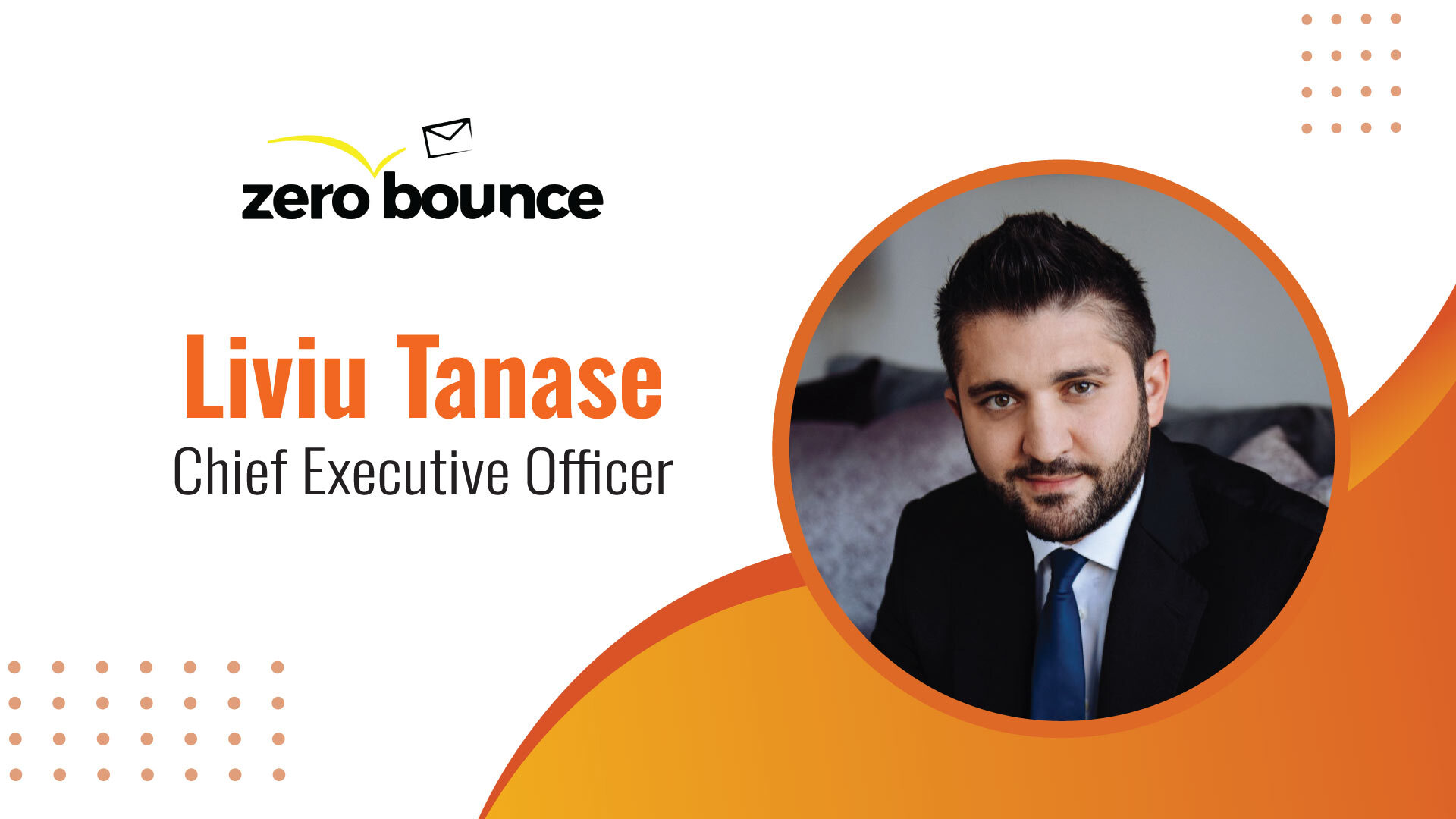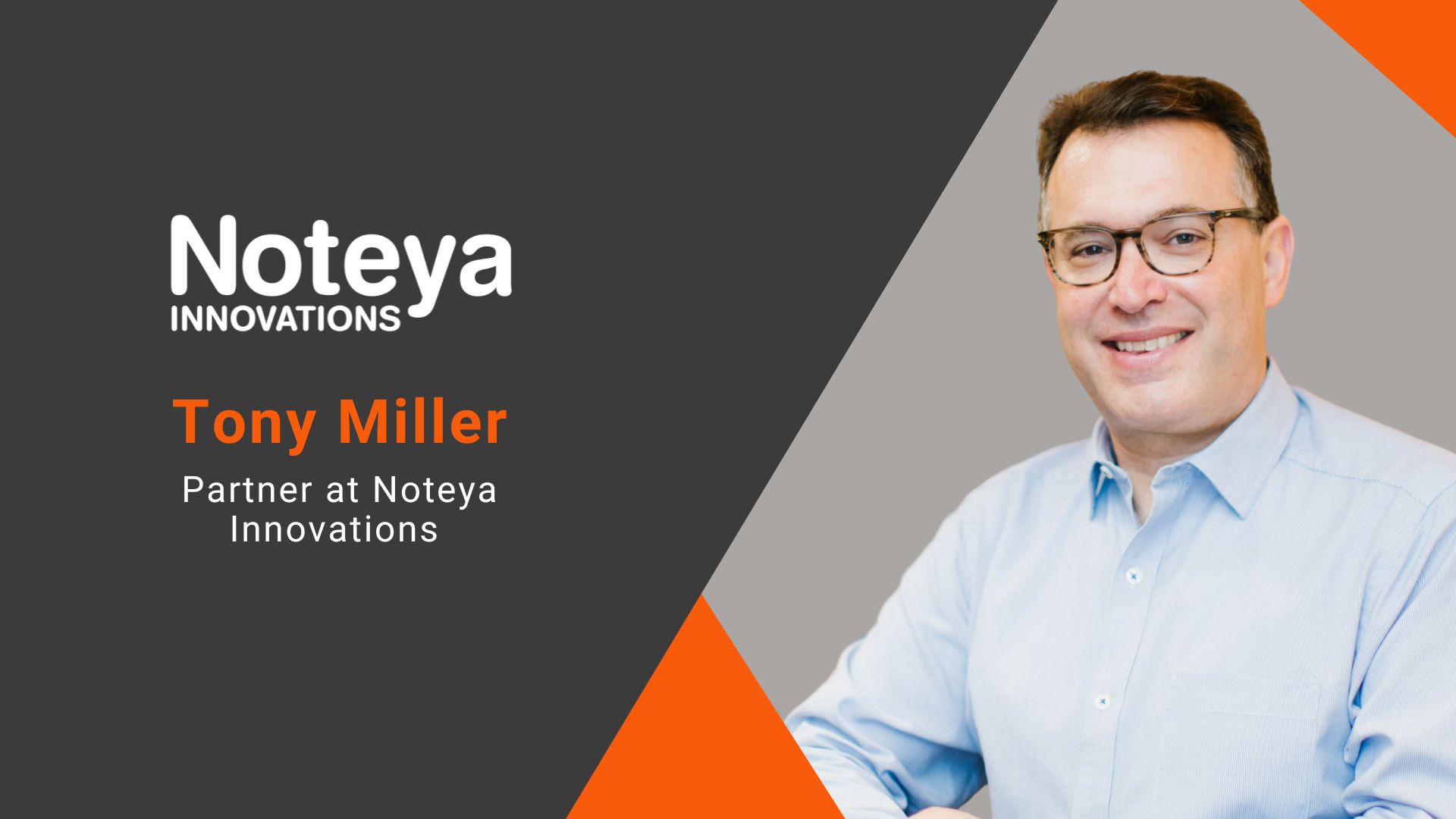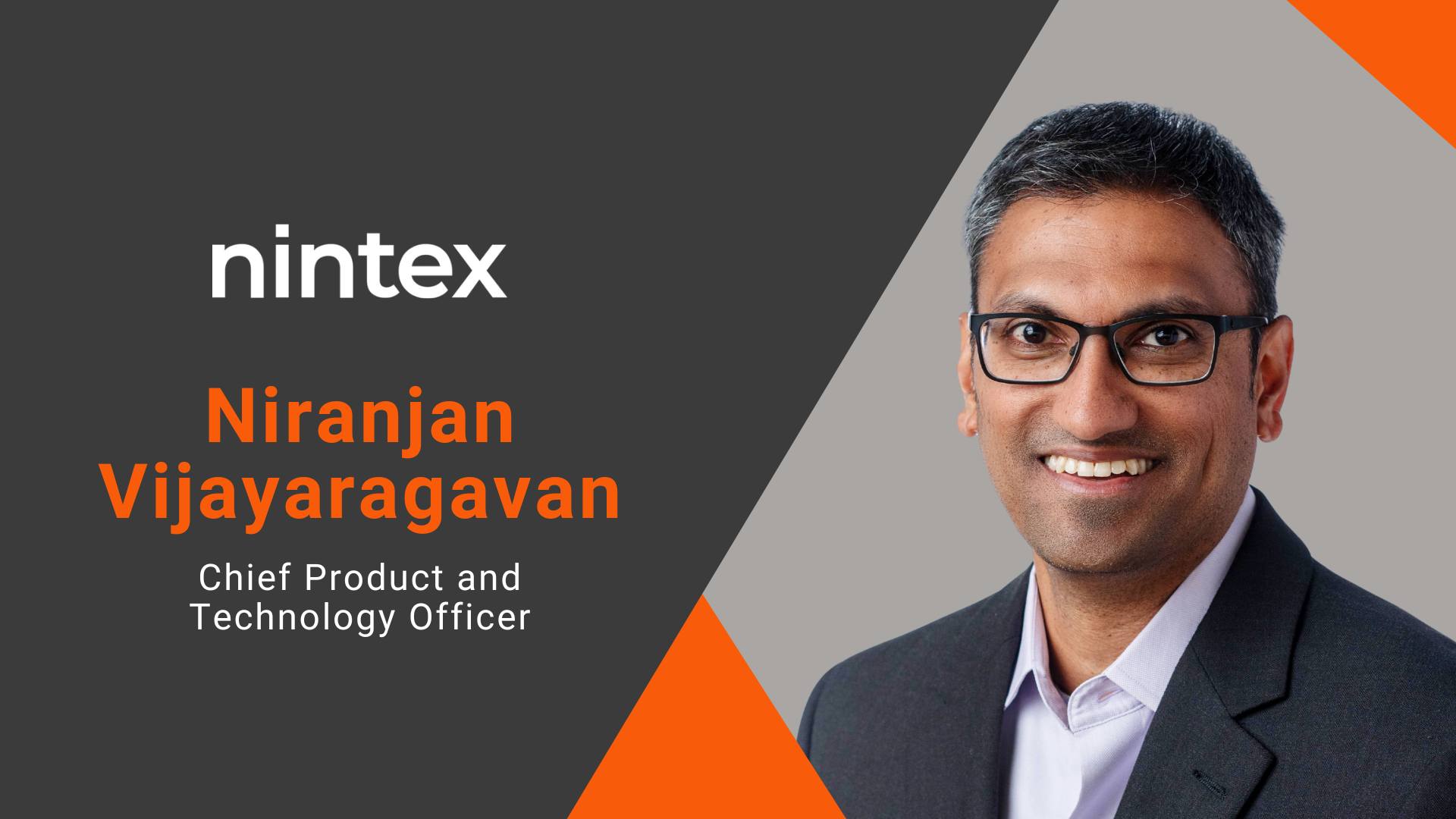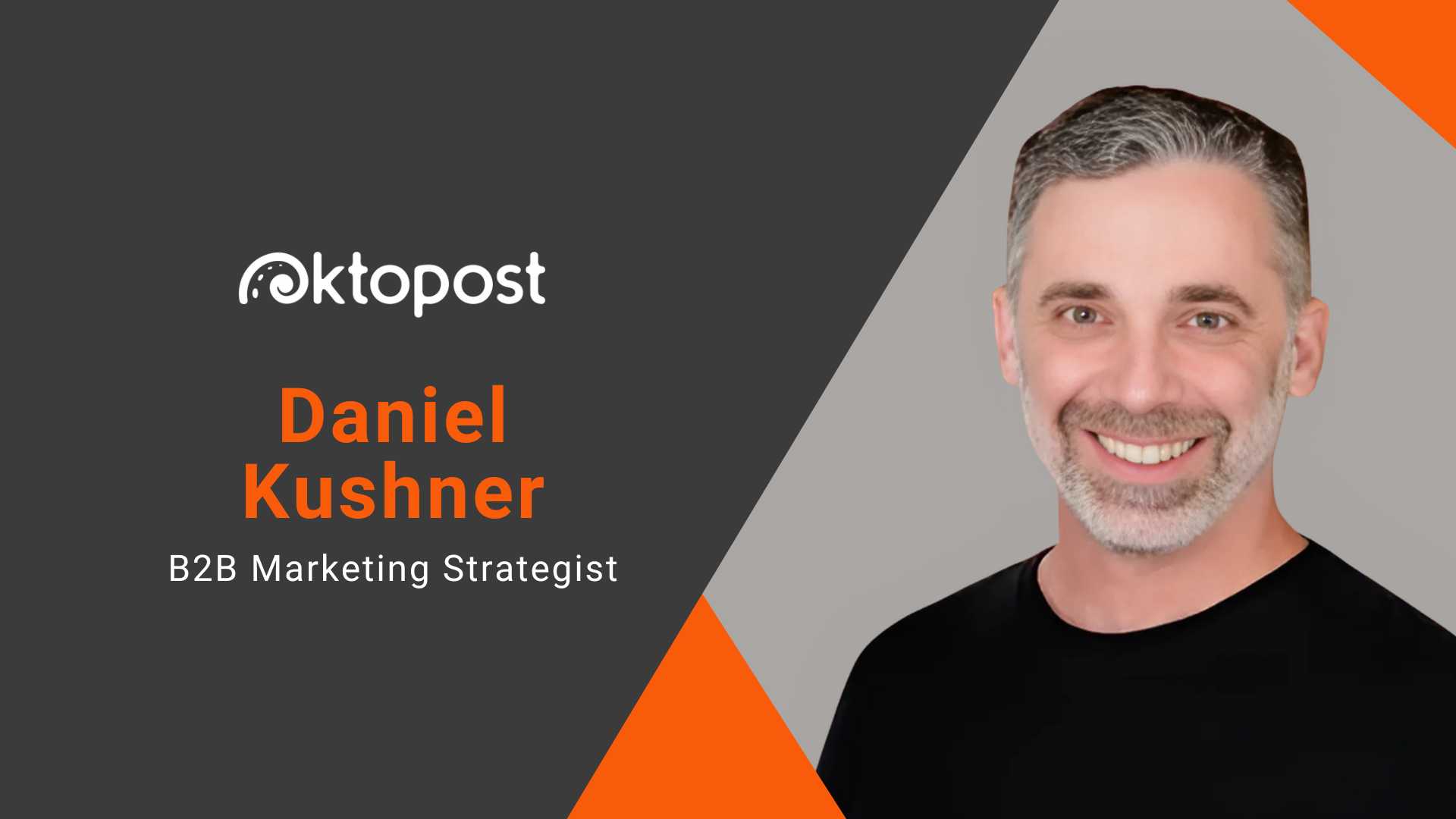
marketing
Martech Edge Interview with Thomas Kriebernegg, General Manager, SplitMetrics Agency
marketing 27 Sep 2024
MarTech Edge Q&A with Adam Rossow, Group RFZ
marketing 6 Sep 2024
Interview with Dan Anderson, Managing Director of Technology at VShift
marketing 21 Aug 2024
1. Can you share some of the key strategies you have implemented to grow world-class technology organizations over your 25+ year career?
A few key principles critical to highly successful technology organizations include:
• An unwavering focus on technology as a means for solving real-world business problems.
• Understanding that people and processes matter more than technology. Technology solutions must work for people and make their experience better, easier, and more efficient; allowing them to focus on their work rather than the technology. A technically brilliant solution will otherwise fail.
• Ensuring flexibility with the ability to constantly evolve and bring new and different technologies into the fold – paired with a constant eye on and a measured, thoughtful approach to emerging technology.
• Constant, ongoing development of technology assets and capabilities that can be leveraged to make future efforts faster and more efficient ¬– modular, capabilities, components and systems that can be reused and recombined.
• Speed to market is critical. Get something into market that solves a core problem or provides a key benefit quickly, then iterate and refine.
Two core strategies that VShift employs to help clients break through their go-to-market issues, which arise directly from these principles, are:
a. Decoupling: Clients typically struggle to get digital experiences launched quickly – or at all. Companies are commonly organized in diverse functional groups, while their legacy technology is monolithic, often provided by a single third-party vendor that is aligned to the needs of only one of those groups – typically the IT team. Decoupling the user experience layer from “as-a-service” platform components has been effective at providing product, marketing, and customer-facing digital team members with autonomy over the creating and managing the experience. These experiences can be launched and updated with minimal dependencies on shared services groups while still adhering to the needs and guidelines of IT and compliance groups, all without the vendor “lock-in” that is typical of monolithic technologies.
b. Accelerator Kits: Composable, modular solutions can be difficult to understand, can seem complex or unapproachable, and are difficult for non-technical, often skeptical, stakeholders to envision. VShift has leveraged our extensive experience to develop and utilize pre-built digital experience accelerators comprised of fully implemented frameworks, technologies, and components. These accelerators provide a means for aligning all the diverse team members and allow full feature digital products to be delivered in a third or less of the time and effort of a more traditional, “legacy” approach.
2. How does the VShift AEM Digital Experience Accelerator expedite website project timelines compared to traditional methods?
Teams looking to utilize AEM headless capabilities to realize the advantages of a decoupled, composable architecture are often overwhelmed by their expectation of the required effort and investment. They assume that the adoption of a headless AEM digital experience will take the same amount of time (or more) than it took to originally implement the Adobe stack.
The Accelerator shifts control to the business stakeholder and away from the vendor or systems integrator allowing the business to progressively adopt the new model without having to wait for upgrades, new software purchases or lengthy engagements. Once the scope is set, the Accelerator allows projects to progress far more quickly via a ready-to-deploy composable solution stack with prebuilt components, workflow, and integrations, ready at kick-off. The Accelerator gives teams a massive “head start” placing them far closer to the finish line by the time they complete the first or second sprint.
3. Can you explain the historical development of the AEM Digital Experience Accelerator and its integration with Adobe’s Universal Editor?
AEM has historically been called out by “MACH-native,” composable technology providers as a prime example of a monolithic, rigid technology stack that requires a significant, ongoing investment in specialized vendor certified consultants. This situation, in our view, is changing as Adobe continues to focus on expanding and enhancing headless capabilities. The AEM Digital Experience Accelerator was born out of our experience leveraging these growing capabilities in a way that maximizes the benefits while reducing vendor “lock-in” and bringing best of breed technologies, frameworks, and solution components into the mix.
The AEM Universal Editor is a good example Adobe’s focus on headless and the growing suite of supporting capabilities. The Universal Editor provides an efficient, intuitive interface for managing content while at the same time allowing for reduced vendor “lock-in” via flexible content integration capabilities. VShift is continually evolving and enhancing the Accelerator to take advantage of these capabilities as they become available.
4. Why might organizations choose to use a visual content editor interface, and what benefits does it offer?
Organizations tend to choose a visual content editor “add-on” to a composable content management system based on the experiences and preferences of their product owners and content management teams. If they have historically used an advanced WYSIWYG CMS interface, they will want to retain comparable features that a visual editor can provide including drag and drop content creation and live editing and previewing. A visual editor paired with a well-structured content model offers the best of both worlds – users focused on layout and page construction will typically prefer the visual editor whereas those focused on content creation and management, especially for multi-platform, multi-channel use, will often prefer the more structured, streamlined content editing interface.
5. How does the AEM Digital Experience Accelerator ensure compliance and security in highly regulated environments such as financial services and healthcare?
Companies in financial services, healthcare and other regulated industry sectors have historically purchased and implemented Adobe technologies. We have developed the Accelerator with an understanding and focus on the type of security and compliance requirements common in these sectors. The Accelerator, implemented with connectivity to legacy content sources, allows for enhanced capabilities for content versioning, workflow, and business rules. As part of any engagement, we work closely with clients to ensure a thorough understanding of their compliance and security needs.
6. What advice would you give to organizations looking to adopt emerging technologies to stay competitive in their industry?
My advice is to start and end with a business sponsor and the organization’s business goals. Far too often, emerging technology programs are relegated to a lab or to an IT team not well aligned to what the market is looking for. It is critical to focus initially on projects that can be delivered to market quickly with meaningful impact to demonstrate viability and real-world benefits, and to build support and consensus. Having a program sponsor, a budget, and the right type of project with measurable objectives, in our experience, is the best ways of ensuring success.
The future of SaaS in the media industry: Interview with Anders Lithner, CEO, Brand Metrics
marketing 16 Aug 2024
1. Welcome, Anders. What factors do you consider most critical when developing business models for tech and SaaS solutions in the media industry?
First and foremost, the unit you’re being paid for (e.g. CPM), and weighing it up against the risks involved. The alternative model would be an unlimited licence for a defined period that does not shift with volume.
The former model - i.e. paying for ads or cloud services based on CPM - has vast potential to deliver in terms of revenue but represents arguably greater risk, because it is susceptible to varying usage and seasonality.
The latter option, which we tend to favour, is the more typical SaaS licence model. It is a far lower-risk approach but revenue growth depends on being able to attract new customers. There is a trade-off to be made and this will always require striking the right balance specific to your company or brand.
2. What are the main challenges you face in product development for SaaS solutions in the media industry?
If only it were possible to distil this into a few - there are just so many.
However, to be successful in our industry, the principle we come back to at every turn is to remain focused on solving for one part of the client project at a time. If we try to address all the issues at once, we will end up not fixing any of them - our efforts and intentions would just get diluted to a point where there is no meaningful progress.
In terms of product development, first we need to ask ourselves what one problem we are attempting to solve, and second, whether our product represents a valid solution. Brand Metrics has been around since 2018, and we are proud to be continually iterating, and successfully fixing one really significant problem.
3. Do you sell your services differently to large media companies and entrepreneurial ventures?
Most of the time there does not need to be a significant shift in approach from our side. We value working with both types of client, and fundamentally we know that we can help either to make money by leveraging the brand uplift data we provide. Smaller ventures usually have less budget available, but equally, they tend to require less time input to implement our solutions.
4. How do you approach building and managing international sales teams?
The complexity of the product we are offering means successful teams need in-depth industry knowledge, advanced sales skills and a strong existing network. Our clients and prospects are innovative and progressive, and we are able to offer nuanced data solutions that deliver actionable insights to a wide variety of businesses.
Our sales team needs to be fully equipped with the experience to build these partnerships. We also need to build teams based on the geographical spread and evolution of our business, so while we're operational globally, we have regional sales representation in a number of markets and rising.
5. How do you foster collaboration between sales and product development teams?
It’s inevitable to see some friction between these teams. After all, while the product team wants the sales team to sell what has been built, the sales team wants the product team to build what has been sold.
To overcome this, the sales team needs to have a degree of flexibility in their prospecting conversations, and the product team needs to be agile enough to deliver against the long-term road map. Therefore, it is important to make sure there's mutual understanding of one another’s perspectives - and a recognition that the different perspectives that come with these different roles is what makes a top-class tech solution possible.
Regular meeting time and interactions are key to building this rapport and harnessing these collaborations.
6. What trends do you see shaping the future of tech and SaaS solutions in the media industry?
There is always some trend or other that we fixate on, that gradually becomes embedded in our working lives, or not, before the furore dies down. So we need to be conscious not to overcommit our efforts or resources, but adapt to them as we go.
If there is one long-term trend, I would say it is improved quality. While we are not yet at the point where every ad dollar spent is maximised in terms of what it can do for the advertiser, we are getting there. Advertising is becoming more and more effective.
In contrast, one trend which fails to materialise in many ways is the effective use of data, especially when it comes to targeting. There are too many instances of working with the wrong data or optimisation strategies, and ending up with the wrong outcomes, which therefore are not delivering brand uplift. An example of this is using data to optimise for clicks, which, without meaningful evaluation of the brand uplift, or lack thereof, results time and again in wasted impressions and ad spend.
Our product is predicated on the belief that you need to employ this type of evaluation - that brand uplift is a key metric to ensure data is being used to inform advertising practice and deliver ROI. And the more you use it, the more you learn what is working - and what is not.
Interview with Arun Chandrasekaran, Distinguished VP Analyst, Gartner.
marketing 9 Aug 2024
Interview with Jozlyn Miller, Senior Education Manager at Boulevard
marketing 1 Aug 2024
1. What does your role as Senior Education Manager at Boulevard involve?
Martech Edge Interview with Dmytro Kudrenko, Founder and CEO, Stripo
email marketing 22 Feb 2024
Welcome, Dmitry! You have been involved in various entrepreneurial ventures throughout your career; what drives you to pursue new opportunities and challenges as a founder and CEO?
Thank you for the warm welcome! My journey from coder to entrepreneur was fueled by a desire to make a tangible impact. It all started with a realization—true innovation isn’t just about writing code; it’s about solving the challenges that people face every day.
What motivates me is the potential to drive change through technology. Take Stripo, for example. We wanted to make email marketing easier for everyone, especially those without coding skills. One of the most rewarding moments at Stripo was when a user shared how our platform transformed their business by saving time and enhancing their marketing strategy. This kind of feedback is a powerful reminder of why we do what we do.
For me, the drive comes from seeing the difference that our technology makes in people’s lives. Learning, adapting, and preparing for the future are what inspire me every day in this entrepreneurial journey.
How did you start Stripo? What was the initial idea behind establishing the company?
When we started Stripo, I had already been in email marketing for 10 years and saw a big problem. Email marketers often struggled to make HTML emails look good on different email clients and devices. Usually, you need to know how to code to do this, but many marketers didn’t have these skills. They had to spend time learning to code instead of doing their main marketing jobs, which was a real headache. They had two choices: ask for help from developers, which wasn’t always easy, or try to learn coding themselves.
At Stripo, we wanted to fix this. Our idea was to let marketers easily create great-looking HTML emails without having to know how to code. This would free them to focus more on their marketing plans and other important work. Our first slogan was all about this: “Build beautiful HTML emails fast without coding skills.”
Actually, many have tried to solve this problem, but I’ve noticed that they most quickly move on to higher-level tasks sending emails, analyzing, and personalizing—forgetting about the foundation they started with and never fully completing the task. We believe in doing one thing well, so we’ve chosen to focus solely on email creation and process optimization around it. For the past seven years, we’ve been dedicated to this and still see a roadmap full of improvements for years to come.
Stripo is a powerful tool that helps businesses create stunning and responsive emails in minutes. How does the Stripo Editor streamline the workflow of email design and development? How does embedding the plugin enhance the user experience and productivity?
It’s crucial to understand that creating emails isn’t just about crafting quality, professional HTML, or how it appears in Outlook and Gmail. What’s more important is what exactly in the email looks good. Stripo allows marketers to focus on the message, which involves many steps:
- Planning
- Coordination
- Design
- Copywriting (sometimes in multiple languages)
- Coding
- Deployment and integration
- Testing
- Analytics
At each step, various specialists are involved, spending time on coordination and revisions. Our initial priority was to find ways to minimize revisions throughout the testing and coordination process. At Stripo, we aimed to preserve the designer’s original vision in each iteration and maintain control over modifications. We strive to implement the principle of built-in quality. Whatever you do, it always works and adheres to the rules and standards.
While Stripo is an exceptional tool, it’s essential to recognize that it represents yet another tool for marketers. Hence, it was a priority for us to ensure one-click integration with as many systems as possible. We support integration with over 80 email service providers (ESPs) and various platforms, streamlining the workflow for marketers. This integration capability is a testament to our commitment to making email creation and deployment as seamless and efficient as possible, allowing marketers to focus more on strategy and less on technicalities.
From the outset, we designed our editor with the vision that it should be effortlessly usable by other vendors (ESPs, CDPs, etc.), enabling them to customize its functionality to meet their specific needs. If a user aims to enhance the quality and speed of email creation, we focus on facilitating one-click integration.
For vendors looking to elevate this experience for their customers, we ensure that minimal development is needed for integration. Just a couple lines of code, and our editor can be embedded within another product with the help of the plugin. The plugin is popular among software companies of all sizes, from small startups to big corporations. Essentially, it’s for any website, CRM, ESP, or other tools that need a modern, easy-to-use drag-and-drop email builder.
You have a strong passion for Lean principles and how they can improve email marketing. How have you implemented Lean principles in your work at Stripo, and what are the benefits for your customers?
For sure, I am a big fan of Lean principles. At Stripo, we’ve cultivated an environment where errors are seen as learning steps. The key is to eliminate the fear of failure among team members. When mistakes happen, we don’t blame anybody for them; instead, we learn from them, support each other, and move forward swiftly. Additionally, we regularly release updates and focus on continuous improvement, prioritizing what will bring the most benefit to our customers from our efforts. Take a look at our Release Notes, which we’ve been publishing for seven years. It shows how frequently and how much we do, as well as how much time we dedicate to fixing bugs.
Here are my recommendations on how to incorporate Lean strategies into email marketing:
- Be ready to adapt your strategy. In the fast-paced business world, waiting for a complete strategy can lead to missed opportunities. It’s better to determine a general direction and take initial steps. Learning and adapting from ongoing data is key. For instance, a comprehensive email marketing strategy might become irrelevant by the time it’s finalized.
- Embrace the MVP approach. Instead of fully developing an idea from the start, begin with a basic version. For instance, when dealing with abandoned shopping carts, you might be uncertain about the specific item left in the cart. In this case, send a general reminder about the incomplete purchase, along with a link to your site for completion. This simple action is more effective than no action at all.
- Include experiments in mass mailings. Continual experimentation is crucial for success in mass email campaigns. Each mailing should be viewed as an opportunity to learn and test hypotheses about your audience.
- Always focus on mistakes. In Lean methodology, defects are considered a form of waste. Addressing errors promptly is essential. For example, quickly fixing a broken link in an email trigger minimizes the negative impact. Even small overlooked errors can lead to significant issues.
- Take a look at the ShuHaRi model, inspired by Japanese martial arts, which represents stages of learning and mastery that are applicable to the evolution of business communication.
The ShuHaRi model consists of three stages:
- Shu: Following established best practices
- Ha: Experimenting and adapting these practices
- Ri: Innovating and establishing new practices
In email marketing, this model helps to focus on appropriate metrics at each stage, evolving from implementation to experimentation and innovation.
During the Shu phase, email marketers should prioritize implementation depth over traditional metrics such as Open Rate or Click-Through Rate. The key is how well strategies are executed, as this impacts revenue the most while also considering the time invested. In the Ha stage, experimentation is crucial. You’ll challenge standard practices and seek alternatives by analyzing past campaigns. Once you have mastered the basics, in the final Ri stage, you transition from merely following guidelines to setting your own and fostering innovative development within your organization.
Additionally, our goal at Stripo is to refine processes to minimize waste and maximize resource use. We emphasize quality in everything we do, from the emails we craft to the overall customer experience. We strive to be a company where innovative ideas are not only generated but also brought to fruition, regardless of the challenges in resources, time, or people.
Your solution enables marketing teams, especially email marketers, to create personalized and engaging campaigns that resonate with their audiences. How does your solution achieve this goal, and what features make it stand out?
We have a wide range of features that make us stand out, including the following:
1. Modular email design: This lets you build email components once and use them in many campaigns. It speeds up email creation, keeps your brand consistent, simplifies edits, and reduces testing. Users can separate design from data for fully automated email production.
2. WYSIWYG Editor: This stands for “What You See Is What You Get.” It shows email content in the editor as it would appear in subscribers’ inboxes. Users can edit mobile and desktop versions differently to suit their needs.
3. We’re integrated with over 80 ESPs, including big names such as Mailchimp and HubSpot and clients such as Outlook and Gmail. Stripo enables easy email exporting to platforms without hassle.
4. We offer over 1,500 ready-to-use email templates suitable for various industries and events.
5. Interactive module generator: This new tool lets users create interactive games (such as wheels of fortune, scratch cards, and questionnaires) without coding. It provides an AMP version, an interactive HTML fallback, and a text fallback to cover all email clients.
6. Brand guidelines kit generator: Users can easily create a brand book from their templates to ensure consistency in all newsletters.
7. Stripo’s Email Translate service enables businesses to localize newsletters for global markets with over 100 languages. It offers direct integration with Google Translate for instant translations in the email editor. In addition, it is possible to download XLS and JSON files with translations made by professional translators.
8. Email client preview: Our tool allows previews across 90+ devices and major email clients.
Each feature aims to make email marketing easier for users. When we think of new features, we always consider how they will simplify email creation.
Stripo’s email template library offers a unique competitive advantage over other vendors in the market. What key features make the email template library different and stand out from the rest?
I would say that a template is a good starting point for creating your own design, but the routine of working with the same templates can quickly become monotonous.
We ensure that our templates are structured and equipped with a set of modules that allow for the rapid creation of new emails daily.
So, our strength lies not just in our template library but more so in our module library.
Additionally, we create processes to ensure that once brand design rules are established, they are difficult for other team members to deviate from in daily use.
How do you see the future of email marketing evolving, particularly in the context of Lean principles and faster delivery of value? What emerging trends and best practices should marketers be aware of?
The core value of Lean is continuous improvement. For marketers, this translates into one thing: test, test, and test again
To ensure that testing is worth more than its cost, we must optimize routine processes significantly. Part of this optimization is where we come in at Stripo.
Regarding trends, I believe most tasks will be delegated to machines, allowing marketers to focus not on sending emails but on the value they bring to communications. This should be the case now, but with technology being so diverse, much time is spent mastering it.
Stripo is open to new partnerships and collaborations. What key factors or criteria do you consider when choosing a potential partner that would create a mutually beneficial relationship?
We’re wholeheartedly diving into projects aimed at one main goal: making email communication better. This means helping marketers easily bring their ideas to life and ensuring that customers get exactly what they expect from vendors.
For example, right now, we’re proud to have over 80 integrations with different ESPs, and we’re always excited to team up with more to give our users even more options for sending their emails.
If we’re talking about teaming up for marketing efforts, it’s key that our future partners are on the same page as us about where email marketing is headed. Also, we really care about with whom we partner. They need to have a good name in the industry for being reliable, delivering top-notch quality, and playing fair and square. And let’s not forget about keeping data safe and private. Our partners need to take this as seriously as we do, with strong measures in place to keep everyone’s information secure.
Additionally, we consistently participate in educational programs, conferences, and similar events to support our mission of shaping the evolution of email marketing.
MarTech Edge Interview with Liviu Tanase, Chief Executive Officer, ZeroBounce
email marketing 30 Nov 2023
Welcome, Liviu! What inspired you to start ZeroBounce, and could you provide an overview of the company's evolution from its inception to its present standing?
Thank you very much for your interest and for allowing me to tell you the ZeroBounce story.
Inspired is the word for how I felt during and after the initial brainstorming for developing an enhanced email list scrubbing software. Like so many big ideas, the catalyst was a personal need for an email validation program that could identify invalid email addresses for removal.
At the same time, I started hearing about email-related pains from all kinds of business people, from solopreneurs to CEOs – everything from emails landing in spam to no delivery at all. I could see that the problem was primarily inadequate email hygiene. Instead of making an email validation platform just for me, it became clear this could help people in all kinds of industries to an unbelievable extent.
Our core product became email validation, and because it was accurate and easy to use, it helped ZeroBounce stand out among competitors. We listened intently to our customers and heard what their email struggles were. So, we started adding more tools designed to help you reach the inbox. We now offer an email scoring tool, email deliverability testing, blocklist monitoring, and DMARC monitoring.
We recently released our Email Finder tool. After using so many email-finding services that would provide invalid email addresses, it was clear that there must be a better way. So, we developed an email finder that identifies the email address while ensuring it has yet to be abandoned or has some other problem.
We can help pretty much anyone who wants a more significant number of the emails they send to land in their recipients' inbox. From promotional to transactional emails, we've checked them all.
Having an Entrepreneurship and Business Administration foundation, how has your educational background influenced your strategy in establishing five companies?
When I think back to my educational foundation, it needs to be specific facts or algebraic formulas that come to mind. Learning and self-teaching are the most important things I've picked up from educators.
I can't remember the teacher who introduced me to qualitative learning, but it's stayed with me more than anything. Instead of learning many things, qualitative learning focuses on the quality of what you learn. It was a real paradigm shift: focusing on the quality of the material you're trying to retain creates a superior outcome over stockpiling tons of information and concepts of varying worth.
So, when I began establishing my companies, I thought back to these concepts and realized that I needed to find a fun and engaging way to pass them along to my team. Furthermore, I wanted to ensure that everyone who wanted to go on the journey with us had the same understanding of the importance of education. We push the quality of learning and teaching to this day and are always happy to assist in everyone's continuing education, from new hires to the corporate boardroom.
I'm also continuing my education and am currently enrolled in Harvard Business School's Owner/President Management program. The day-to-day practice of running a business ultimately makes you an entrepreneur. But getting continuous education – in every career stage – is invaluable.
How does ZeroBounce's email scoring system work, and how does it benefit clients in improving their email campaigns?
The greatest benefit of using an email scoring service is that you filter out potentially invalid leads to focus on the most valuable ones.
Frequently, administrators set up catch-all email accounts to collect all of the emails sent to a domain. That way, there are no bounces. They do this with the intent that, hopefully, no emails will "slip through the cracks." However, some catch-all emails will bounce – the challenge is knowing which ones.
ZeroBounce's email scoring system uses artificial intelligence to assess how the email addresses on your list are likely to interact with you based on overall activity. It uses a score from 0 to 100 to indicate activity levels so you can better gauge potential validity. We recommend senders use only high-score contacts of 8 to 10.
Some catch-all email addresses are risky, while others are likely valuable for marketing or other purposes. ZeroBounce's email scoring software helps you discern between the two.
ZeroBounce specializes in email validation and deliverability. What sets ZeroBounce apart from its competitors in the field, and how do you maintain a 99% accuracy rate?
It's our 99% accuracy that helps ZeroBounce stand out in its space, and we maintain it by constantly advancing our email validation algorithms. Getting that kind of accuracy rate would only be possible with our team of experts continually fine-tuning and testing our software.
ZeroBounce uses a proprietary system that checks the validity, activity, and overall quality of email addresses in real-time. It performs multiple validations, such as syntax, domain, MX record, SMTP, catch-all, abuse, disposable, and spam trap checks.
The email scoring and Activity Data tools add more confidence for senders in helping them target their campaigns toward the right prospects.
But it's not enough to build the most accurate email validation service – you also have to do it in the most secure manner possible. As a data processor, ZeroBounce is hypersensitive to potential security threats. So, since day one, we set out to achieve the highest security standards.
ZeroBounce is GDPR and CCPA-compliant and seeks every reasonable certification to remain as secure as possible. We've achieved SOC 2 Type 2, ISO 27001, and HIPAA compliance. This quest is ongoing, too.
When we hear of new professional benchmarks or credentials, we work fastidiously to achieve them. It's probably why we've also become known as the most secure email verification service.
Could you share some key achievements or milestones that ZeroBounce has reached in email deliverability?
Occasionally, an email validation service will boast 100% accuracy. It would help to look suspiciously at anyone who makes a claim like that because it's actually unobtainable. It was a long road to get us from 98% accuracy to 99%, but our goal to achieve the most remarkable accuracy possible is neverending.
Other milestones would be every time we surpass another billion email validations. Cleaning email lists to eliminate spam is our bailiwick, and it's a source of satisfaction to know how much insufficient data we've helped our customers eliminate. We've validated over 22 billion email addresses – and that ticker never pauses. It'll be another billion emails before you know it.
Could you please outline your organization's future strategies in terms of growth and diversification?
No part of your business is worthy of scrutiny. We look critically at everything, and that's served us well. Our product, benefits, and company culture have earned us a lot of compliments from partners, but more importantly, from within. We will continue to excel in every possible way.
Our growth stems from fostering an environment where people want to be. You're going to find that creating a workplace where everyone is respected and no point of view is brushed off will result in many people who want to work for you. Our team is small, yet there are 11 languages among us. As you can imagine, this can come in handy.
If your company grows as quickly as ours, you'll naturally serve and bring on many individuals. Our goals moving forward are to serve even more businesses from different nationalities around the globe.
For a company to grow, you need competent people and motivation with a guiding vision and mission. This applies to everyone, from new hires to the leadership. If any part of this falters in any way, your growth will be stunted.
You've talked about your passion for chess. Can you draw parallels between the skills and strategies used in chess and their applicability to decision-making and problem-solving in the business realm?
Can I ever!
Chess is a game where you almost always have more than one option, but there's one that reigns supreme. You must develop a strategy, but you can be flexible because a skilled opponent may occasionally knock you for a loop. Problem-solving and strategy aren't "like chess" in my book – they are chess!
The feeling I get playing chess is the same when strategizing and executing in business. The biggest takeaway: Keep your cool and never get overwhelmed. It's how to get better with business pursuits and is critical in chess.
When I play chess, although it's an intense game, it's something I enjoy every moment of, and that's what I strive for in business as well.
Page 10 of 11
Most Recent
An Updated Look at the Enduring Value of Press Releases
Interview Of : Tony Miller Partner at Noteya Innovations
PetAg & 5WPR: Science-Backed Pet Wellness
Interview Of : Marijana Gucunski
Future of Intelligent Automation | Nintex
Interview Of : Niranjan Vijayaragavan
Beyond Black Friday: Year-Round Retail
Interview Of : Anthony Capano
AI & Composable Content: Karl Rumelhart on Contentful’s Digital Edge
Interview Of : Karl Rumelhart
B2B Social Data Meets Business Impact
Interview Of : Daniel Kushner


















